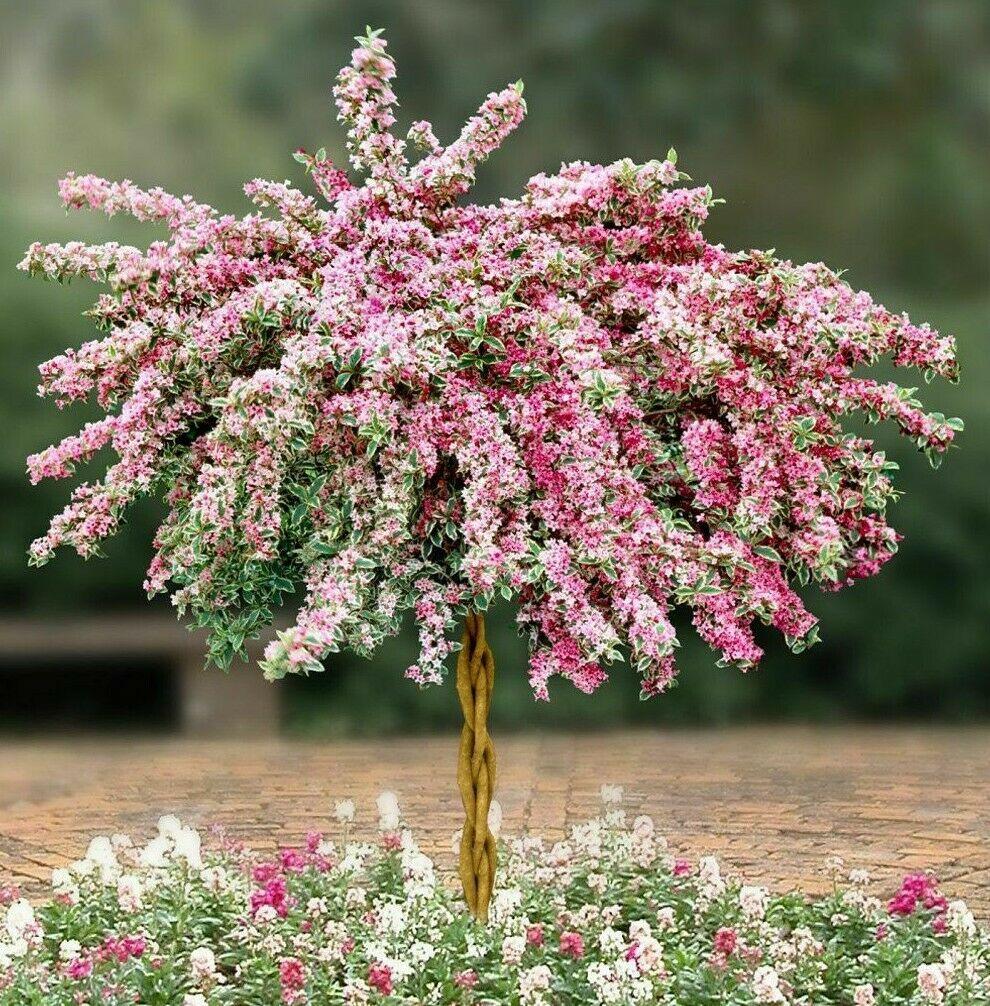Weigela, a genus of deciduous shrubs, has captivated gardeners with its vibrant blooms and versatile nature. These elegant plants, native to eastern Asia, offer a stunning display of color in spring and summer. With their diverse range of cultivars, Weigela can add a touch of beauty to any garden, from formal landscapes to informal cottage gardens.

Weigela belongs to the honeysuckle family, Caprifoliaceae. The genus is named after Christian Ehrenfried Weigel, an 18th-century German scientist. There are approximately 10-12 species of Weigela, and countless cultivars have been developed through hybridization.
Weigela shrubs typically grow to a height of 4-8 feet and have a rounded or mounded shape. Their leaves are oval or elliptic, with serrated edges. The foliage is often a deep green color, but some cultivars exhibit striking purple or variegated foliage.
:max_bytes(150000):strip_icc()/weigela-bushes-care-facts-2132733-hero-b8e4459c2b2a41b88f4f72383759af62.jpg)
The most captivating feature of Weigela is its abundant blooms. The flowers are trumpet-shaped and come in a variety of colors, including pink, red, white, and bi-colored. They bloom in late spring and early summer, attracting pollinators such as bees and butterflies. Some cultivars may even produce a second, smaller flush of blooms in late summer.
There are numerous Weigela cultivars available, each with its own unique characteristics. Here are a few popular choices:

Distinctive Features: Large, deep pink flowers with a contrasting white throat.
Distinctive Features: Vibrant ruby-red flowers that bloom profusely.
:strip_icc()/weigela-blooms-with-green-and-yellow-leaves-29426c5e-fd8758dda1c44d77a7349cc46d73279c.jpg)
Distinctive Features: Pure white flowers that stand out against the dark green foliage.
Distinctive Features: Delicate pink flowers with a darker pink center.

Distinctive Features: Striking combination of dark purple foliage and rosy-pink flowers.
Weigela thrives in full sun to partial shade. It prefers well-drained soil but can tolerate a wide range of soil types. When planting, consider the mature size of the shrub and space accordingly.
1. Prepare the Soil: Dig a hole twice as wide and as deep as the root ball.
2. Amend the Soil: Incorporate compost or well-rotted manure into the soil to improve drainage and fertility.
3. Plant the Shrub: Place the Weigela in the hole and backfill with soil, ensuring the graft union is above the soil line.
4. Water Thoroughly: Water the newly planted shrub deeply to settle the soil around the roots.
Weigela has moderate water needs. Water regularly during dry periods, especially during the blooming season. Fertilize in early spring with a balanced, slow-release fertilizer to promote healthy growth and abundant flowering.
Pruning is essential to maintain the shape and vigor of Weigela. Prune lightly after flowering to remove spent blooms and encourage new growth. More substantial pruning can be done in late winter or early spring to rejuvenate older shrubs.
Weigela is generally resistant to pests and diseases. However, it may be susceptible to powdery mildew in humid conditions. Good air circulation and avoiding overhead watering can help prevent this fungal disease.
Weigela can be used in various ways to enhance your garden’s beauty. Here are a few ideas:
Plant Weigela in rows to create a colorful and low-maintenance hedge or border.
Use Weigela to soften the lines of your home’s foundation and add a welcoming touch to your entryway.
Combine Weigela with other flowering shrubs and perennials to create a visually stunning and diverse mixed border.
Plant dwarf Weigela cultivars in containers to add color to your patio or balcony.
With its vibrant blooms, versatile nature, and low-maintenance care, Weigela is a valuable addition to any garden. By choosing the right cultivars and following proper planting and care techniques, you can enjoy the beauty of these delightful shrubs for years to come.
Weigela Plant
